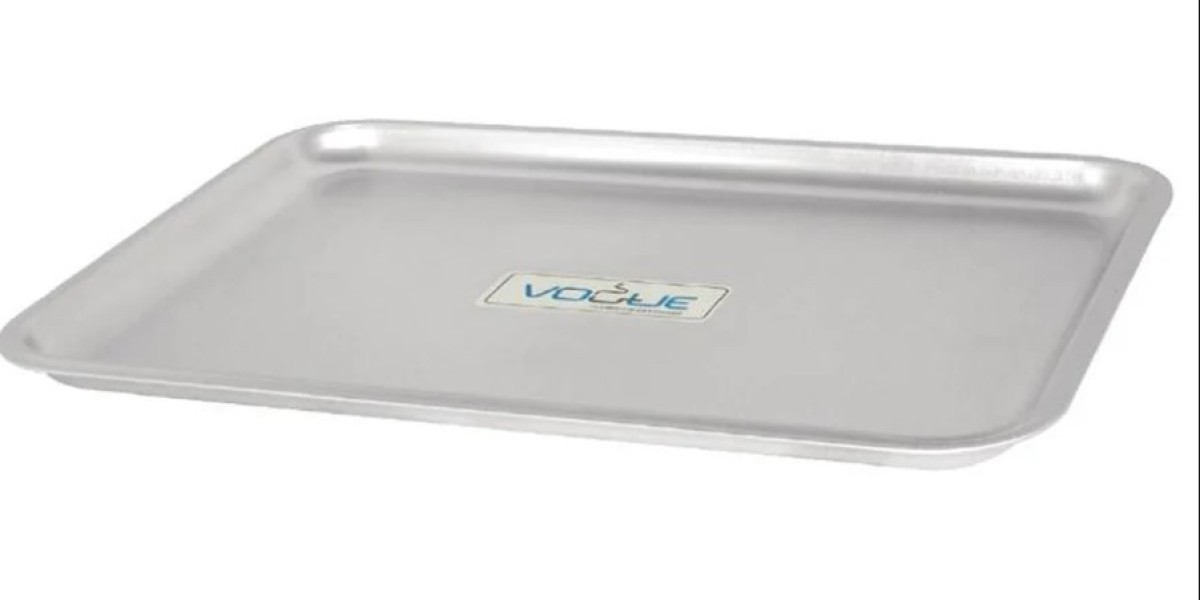What Is a Baking Tray?
A baking tray (a baking sheet tray) is a flat, metal pan used in ovens. It’s perfect for baking or roasting cookies, fries, chicken, or even small pizzas. The tray lets heat spread evenly so the food cooks the right way.
Some baking trays have edges, while others are flat. The ones with edges are great for things that may drip or have oil. Flat trays help with even airflow, which is great for cookies or pastries.
Why Is a Baking Tray Important?
You might think any tray can go in the oven, but that’s false. A good baking sheet tray helps your food cook evenly and keeps your oven clean by catching crumbs or drips.
Here are some reasons why baking trays are essential:
- Even heat: They help food cook the same way on all sides.
- No mess: They catch oil and crumbs so your oven stays clean.
- Easy to use: Most trays are lightweight and easy to clean.
- Better baking: The right tray can stop cookies from burning or sticking.
Types of Baking Trays
There are many kinds of baking trays. Each one has a use. Let’s look at the most common types:
1. Aluminum Baking Trays
Aluminum trays are lightweight and heat up fast. They are great for cookies and roasting veggies. However, they may bend at high heat and scratch easily if you use metal tools.
2. Non-stick Baking Trays
These trays have a coating that stops food from sticking. You don’t need much oil when using them. They are easy to clean, but the coating can wear off over time. Don’t use sharp tools on them.
3. Stainless Steel Baking Trays
These are strong and last a long time. They don’t rust and are safe to wash in the dishwasher. Although they may not heat up as fast as aluminum, they cook food evenly.
4. Silicone Baking Trays
These trays are soft and flexible. You can bend them and they won’t break. They are great for muffins, cupcakes, and even cookies. Silicone trays don’t stick but can be tricky to move when complete.
5. Insulated Baking Trays
These trays have two layers with air in between. The air acts as a cushion to keep food from burning. They are best for baking cookies with soft centers.
How to Choose the Right Baking Tray
Choosing a baking tray depends on what you bake the most. Here are some tips to help you pick the right one:
- For cookies and pastries: Use an aluminum or insulated baking tray.
- For meats and veggies: Go with a non-stick or stainless steel tray with edges.
- For baking on a budget: Aluminum trays are affordable and work well.
- For easy cleanup: Choose a non-stick or silicone baking sheet tray.
- For long-term use: Stainless steel trays last the longest.
Also, check the size. Make sure it fits your oven. Some ovens, especially toaster ovens, need smaller trays.
Tips for Using Baking Trays
Here are a few simple tips to help you get the most from your baking sheet tray:
- Use parchment paper or a silicone mat: This helps food not stick and makes cleanup easier.
- Preheat the oven: Let the oven heat up before placing your tray inside.
- Don’t overcrowd the tray: Give space between food so it cooks evenly.
- Avoid sharp tools: Don’t use knives or metal tools on non-stick trays.
- Let trays cool: Wait for your tray to cool before washing it with cold water.
Cleaning and Storing Your Baking Trays
To make your trays last longer, clean them the right way:
- For non-stick trays, wash with warm water and a soft sponge.
- You can scrub off stains for aluminum or steel trays but avoid steel wool.
- Silicone trays can go in the dishwasher, but rinse off grease first.
- Dry your trays entirely before storing them to prevent rust.
Store them flat or upright in a cabinet. Keep similar sizes together for easy access.
Conclusion
A baking tray is a must-have tool in any kitchen. Whether you call it a baking tray or a baking sheet tray, it helps your food cook better, keeps your oven clean, and makes baking fun.
Pick the tray that fits your needs, care for it properly, and enjoy making tasty food at home. Even a simple recipe can turn out great with the right baking tray.









